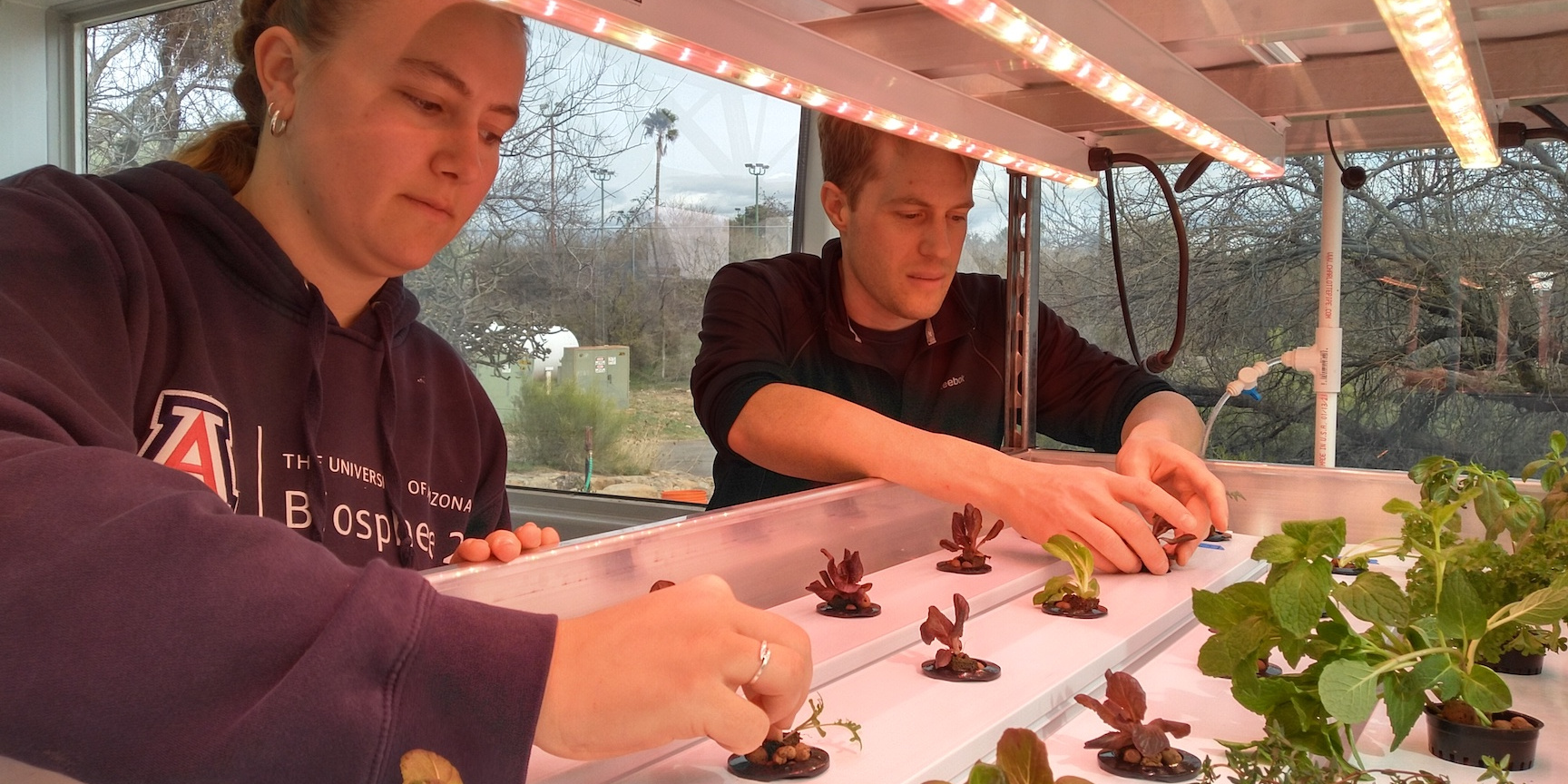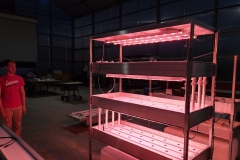
Written by Sean Gellenbeck, PhD
Initiated in mid January, the new, experimental hydroponics rack system was set in motion by SAM team members Sean Gellenbeck and Luna Powell. This upgrade is designed to be more effective and efficient in plant production, with intent to be fully computer monitored, controlled, and automated in the final design.
This single rack solution is a prototype built for use by  (Hey! Is that? Could it be James Burk, Executive Director of the Mars Society helping carry in a shipment of new raceways!?)
(Hey! Is that? Could it be James Burk, Executive Director of the Mars Society helping carry in a shipment of new raceways!?)
To avoid these challenges, the redesigned system uses a different method called Nutrient Film Technique, or NFT. In NFT, a thin film of the nutrient solution is run through enclosed channels containing the plant root zones. With the roots exposed to the nutrient solution the plant can take up the nutrients and water they need. And the enclosed channels work to prevent the roots from drying out. This has the added benefit of reducing algae growth as the nutrient solution is now no longer exposed to light. As compared to Ebb and Flood the NFT design, less water is moved through the system at any one time. This results in a smaller pump and less complex structure to support the weight of the water above.
To create the new system, Sean and Luna made use of the metal support structure from the previous design. The flood trays were removed and replaced with 4 NFT channels running in parallel (side by side). The PVC channels are a standard within the hydroponics industry and are used in commercial applications. The channels were cut to size and sealed to prevent leaks onto other components. As with the original design, there are three levels in the NFT setup and the nutrient solution flows from one level to the next by gravity. However, where the previous design moved water simultaneously to all three levels, this new design carries water to the highest tray only, with gravity bringing the water to the lower two. In total, the system has 4 NFT channels flowing in parallel that connect to another set of channels on the second shelf (in series), followed by a third level of channels. The nutrient solution is pumped to the top set of channels and is split across all four channels before flowing from one level to the next. Finally, the draining solution returns to the main nutrient tank which is sized to reduce the need for crew interaction and allows for future development and system expansion.
In total, the new SAM NFT hydroponics rack has space for 78 plants. Thanks to our Jason at Biosphere 2, our team was able to quickly prepare the system with 4 species of lettuce, kale, collared greens, and a variety of herbs for the Imagination 1 crew to use during their mission.
After the Imagination 1 mission, development of the SAM hydroponics system will continue with refining the current design, duplicating it across four racks, and eventually building an automated control system to remove the need for manual crew intervention for pH and EC levels (electrical conductivity to measure of the nutrient level in solution). While much larger systems will be a part of the SAM ECLSS in the future, we expect to maintain this stand as a resource for crew experiments and education.


